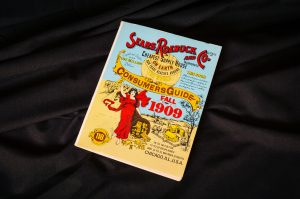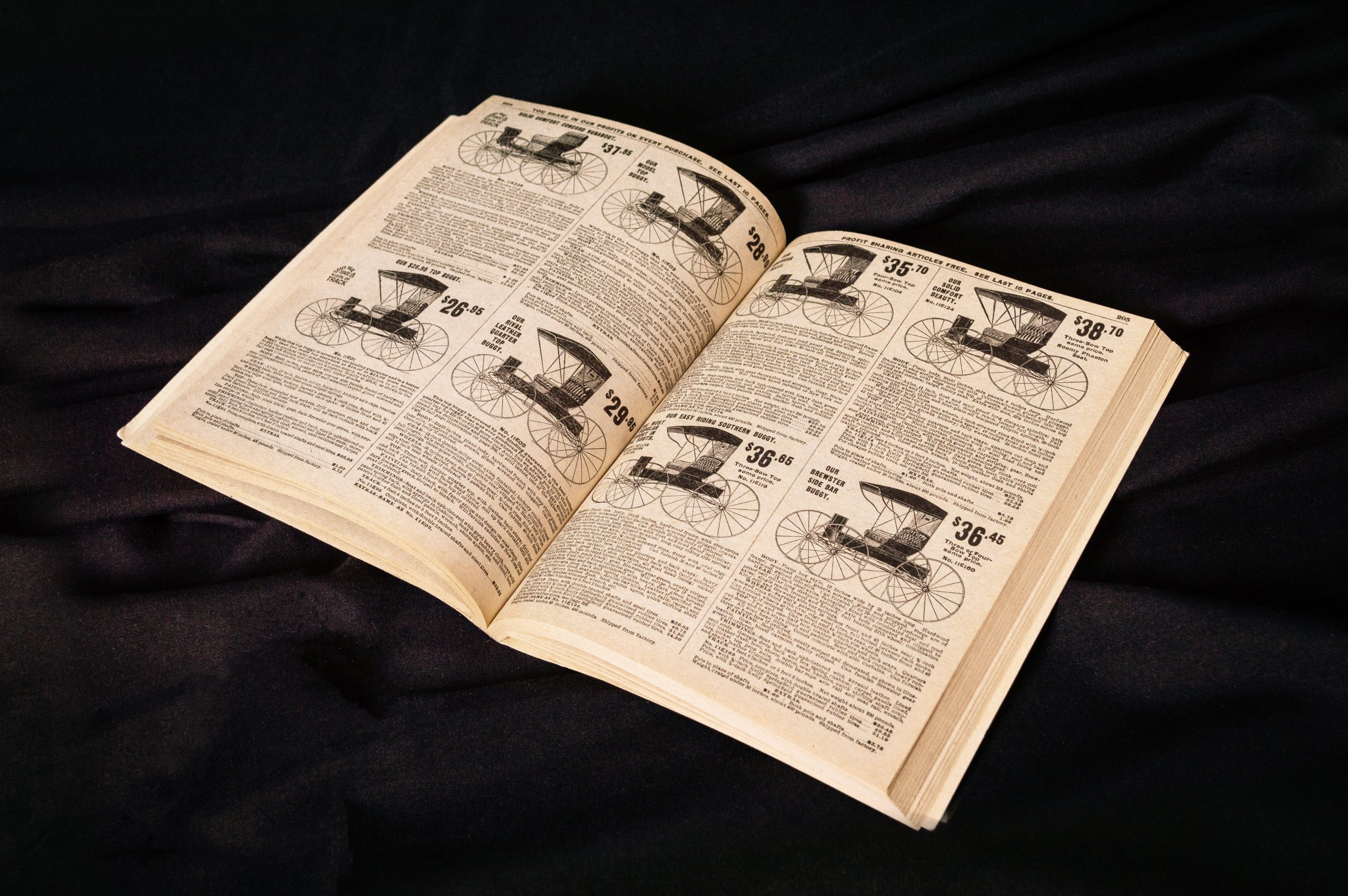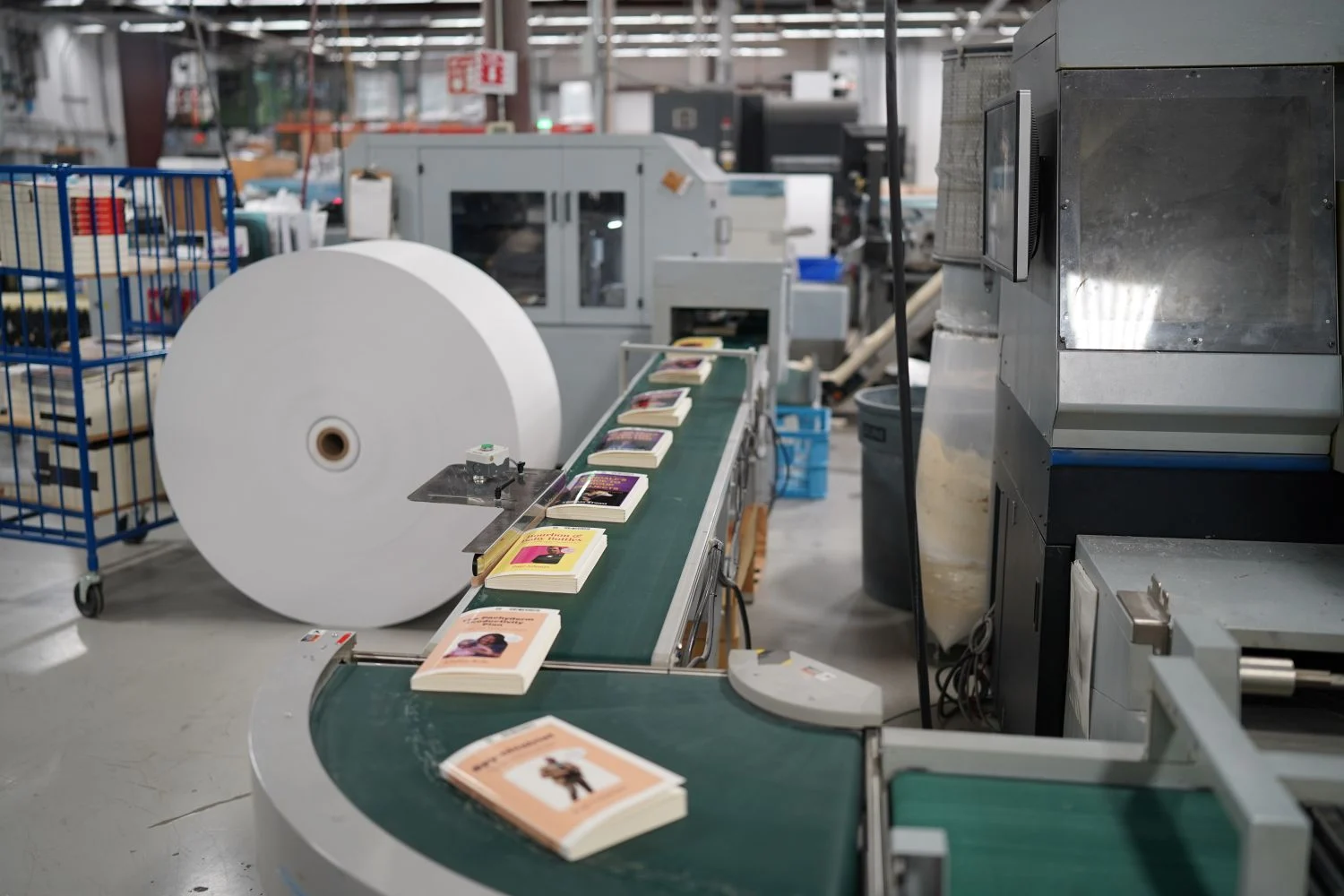Browsing through a thrift store the other day, I found a reprint of the Fall 1909 Sears, Roebuck and Co. catalog. This is the famous catalog that was printed from 1888 to 1993 and was a major source of goods for many Americans. Of course, it’s fun to flip through the pages and note the kinds of things people were purchasing in 1909, like a German Cuckoo Clock for $6.65, “our new dainty blue wallpaper,” which was apparently “a real 25¢ quality for 14¢ per double roll!” and “Dr. Wilden’s Quick Cure for Indigestion and Dyspepsia” at $3.50 for a dozen boxes.
What We Can Learn
While much of the catalogue is adorably antiquated (lol at the “easy riding southern buggy – the most popular buggy in the south!”), there are still a few lessons to be learned from a catalog that was once one of the most-read publications in the U.S.
1. The Shape of Things
The Sears catalog is surprisingly small in width and height. According to lore, founder Richard Sears intentionally made his catalog slightly shorter and narrower than competitor Montgomery Ward’s catalog. This was so it would be placed on top of the pile when the catalogs were stacked.
In this century, standing out may mean something different. Instead of sizing, certain paper or finishes might make customers more likely to hang on to your catalog. Perhaps including an interview with a well-known person in the field could be the reason they keep and look through your catalog. Or putting out a catalog with a fresh and modern design may cause would-be customers to pause and really look at what you have to offer.
2. Share Your Story
The Sears, Roebuck and Co. catalog devotes pages to sharing the details of its manufacturing facilities. They go into detail about “our new forty-acre home” in Chicago, including multiple illustrations. Not only is it interesting to read, but it also gives them the opportunity to subtly brag about how their facility connects directly with a major railroad network. It also gives them an opportunity to share information about their impressive-sounding facilities that include “elevators, mechanical conveyers, endless chains, moving sidewalks, gravity chutes, apparatus and conveyers, pneumatic tubes and every known mechanical appliance for reducing labor.” They also write about the park built next to their main facility where “employees can breathe the fresh air, free from the dust and noise common to most parts of our city.”
Sharing your story could mean highlighting the background of an employee. It could still mean sharing about your manufacturing facilities. It could mean posting about the charity drives or volunteer participation of your organization. Think about what stories might fascinate your customers, or what communicates the culture of your company.
 3. Everybody Loves a Deal
3. Everybody Loves a Deal
The catalog mentions their profit–sharing program on nearly every page. It is virtually impossible not to know about it. Customers would receive a certificate with every purchase, and once they had certificates for purchases totaling $50, they could trade them in for one of the items listed in the last 16 pages of the catalog.
4. Easy Access
Getting your hands on a Sears, Roebuck and Co. catalog in 1909 was easy to do. The offer is clearly printed in the front of the catalog: they will send it, free, to anyone who requests a copy. This probably isn’t the exact strategy you want to use, but do make sure your catalog is landing in the hands of the people you want to see it. And do make this an easy request to make via your website.
5. Clear-cut Instructions
The Sears, Roebuck and Co. catalog lays out detailed instructions about how to order. Nowadays your customers probably have a pretty good handle on how to order, but for those who do have questions, make sure they don’t have to work too hard to get them answered. That could mean a customer service line to call or text, or an easy link to a website with more information.
6. What They Need
On a page of silver-plated crucifixes and candelabras, a bottle of silver polish ($0.22 per half pint) is clearly listed. They knew that anyone ordering fine new silver would eventually need silver polish, so they put it where it was difficult to miss. For your catalog, this may mean placing complementary products or attachments in the correct size on the same page as the product models listed on the page.
7. Expand the Audience
The Sears, Roebuck and Co. catalog was both B2C and B2B. At first glance, it appears to be mostly B2C, but there’s an entire paragraph explaining why local merchants should make use of their products. Under the subheading, “Our Compliments to the Retail Merchant,” the catalog explains that “it is not our desire to antagonize the retail merchant.” They explain how the same prices apply to merchants and resellers alike, and that all packages are shipped in plain packaging so customers won’t know where the goods originated.
Sign of the Times
Here are some more items listed in the Sears, Roebuck and Co. Fall 1909 catalog that stood out to my modern eyes.
- Asbestos Sheet Mill Boards, “FIRE and ACID PROOF,” and “especially adapted for fireproof linings of floors, partitions, etc.” ($0.72 for 40×40 inches of 1/8-inch thick board)
- 13 different options for boxing gloves, ranging in price from $0.82 for four gloves (boys size) to $3.90 for a pair of Genuine Root Pattern Fighting Gloves
- Dancing Floor Wax (Powdered) for $0.30 per can, “Sprinkle it on the floors and the dancers will do the rest.”
- In the paint department, White Lead, “a combination of absolutely pure white lead and zinc ground into pure linseed oil.” ($0.06 per pound, sold in kegs of 12.5, 25, 50 and 100 pounds)
- Marceau Slide Trombones that promise “the slide works with ease and rapidity and the tone is mellow and powerful,” ($6.65 for the brass or $8.55 for the nickel–plated)
- Banjos ranging in price from $2.45 for the Students’ Banjo to $19.65 for Our University Glee Banjo
- “Vin Vitae” or Wine of Life, “a tonic stimulant for the tired, weak and sick.” Ingredients include coca leaves, corn silk, senna and port wine.
- One of my favorite little details is about “unnecessary correspondence.” They do not want people writing to check on the state of their orders or what the shipping will cost and included a six-paragraph statement telling people not to write.






